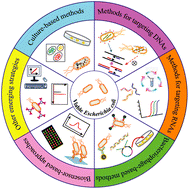Progress in methods for the detection of viable Escherichia coli
Abstract
Escherichia coli (E. coli) is a prevalent enteric bacterium and a necessary organism to monitor for food safety and environmental purposes. Developing efficient and specific methods is critical for detecting and monitoring viable E. coli due to its high prevalence. Conventional culture methods are often laborious and time-consuming, and they offer limited capability in detecting potentially harmful viable but non-culturable E. coli in the tested sample, which highlights the need for improved approaches. Hence, there is a growing demand for accurate and sensitive methods to determine the presence of viable E. coli. This paper scrutinizes various methods for detecting viable E. coli, including culture-based methods, molecular methods that target DNAs and RNAs, bacteriophage-based methods, biosensors, and other emerging technologies. The review serves as a guide for researchers seeking additional methodological options and aiding in the development of rapid and precise assays. Moving forward, it is anticipated that methods for detecting E. coli will become more stable and robust, ultimately contributing significantly to the improvement of food safety and public health.

- This article is part of the themed collection: Analyst Review Articles 2023


 Please wait while we load your content...
Please wait while we load your content...